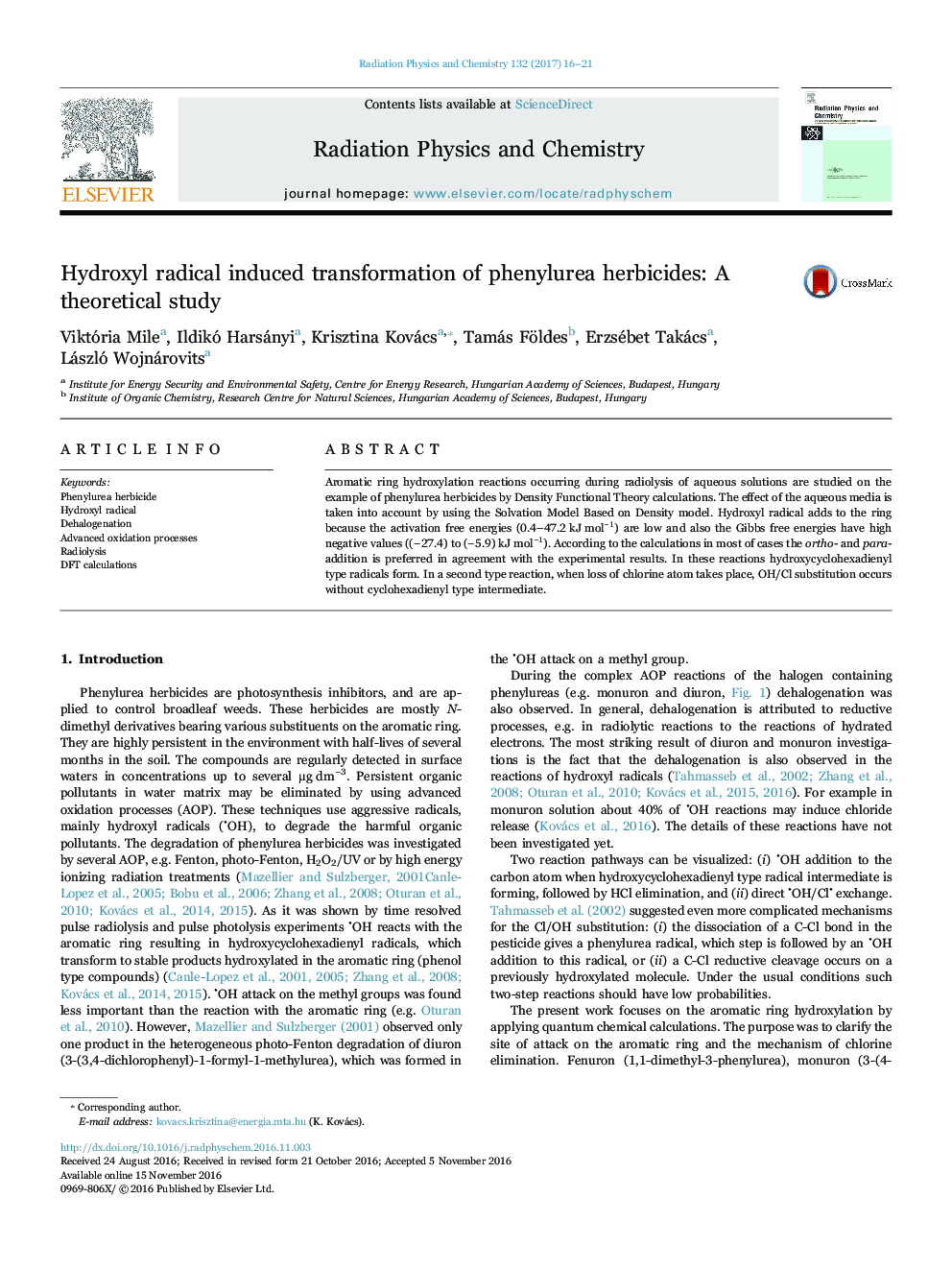| Article ID | Journal | Published Year | Pages | File Type |
|---|---|---|---|---|
| 5499182 | Radiation Physics and Chemistry | 2017 | 6 Pages |
Abstract
Aromatic ring hydroxylation reactions occurring during radiolysis of aqueous solutions are studied on the example of phenylurea herbicides by Density Functional Theory calculations. The effect of the aqueous media is taken into account by using the Solvation Model Based on Density model. Hydroxyl radical adds to the ring because the activation free energies (0.4-47.2Â kJÂ molâ1) are low and also the Gibbs free energies have high negative values ((â27.4) to (â5.9)Â kJÂ molâ1). According to the calculations in most of cases the ortho- and para-addition is preferred in agreement with the experimental results. In these reactions hydroxycyclohexadienyl type radicals form. In a second type reaction, when loss of chlorine atom takes place, OH/Cl substitution occurs without cyclohexadienyl type intermediate.
Keywords
Related Topics
Physical Sciences and Engineering
Physics and Astronomy
Radiation
Authors
Viktória Mile, Ildikó Harsányi, Krisztina Kovács, Tamás Földes, Erzsébet Takács, László Wojnárovits,
